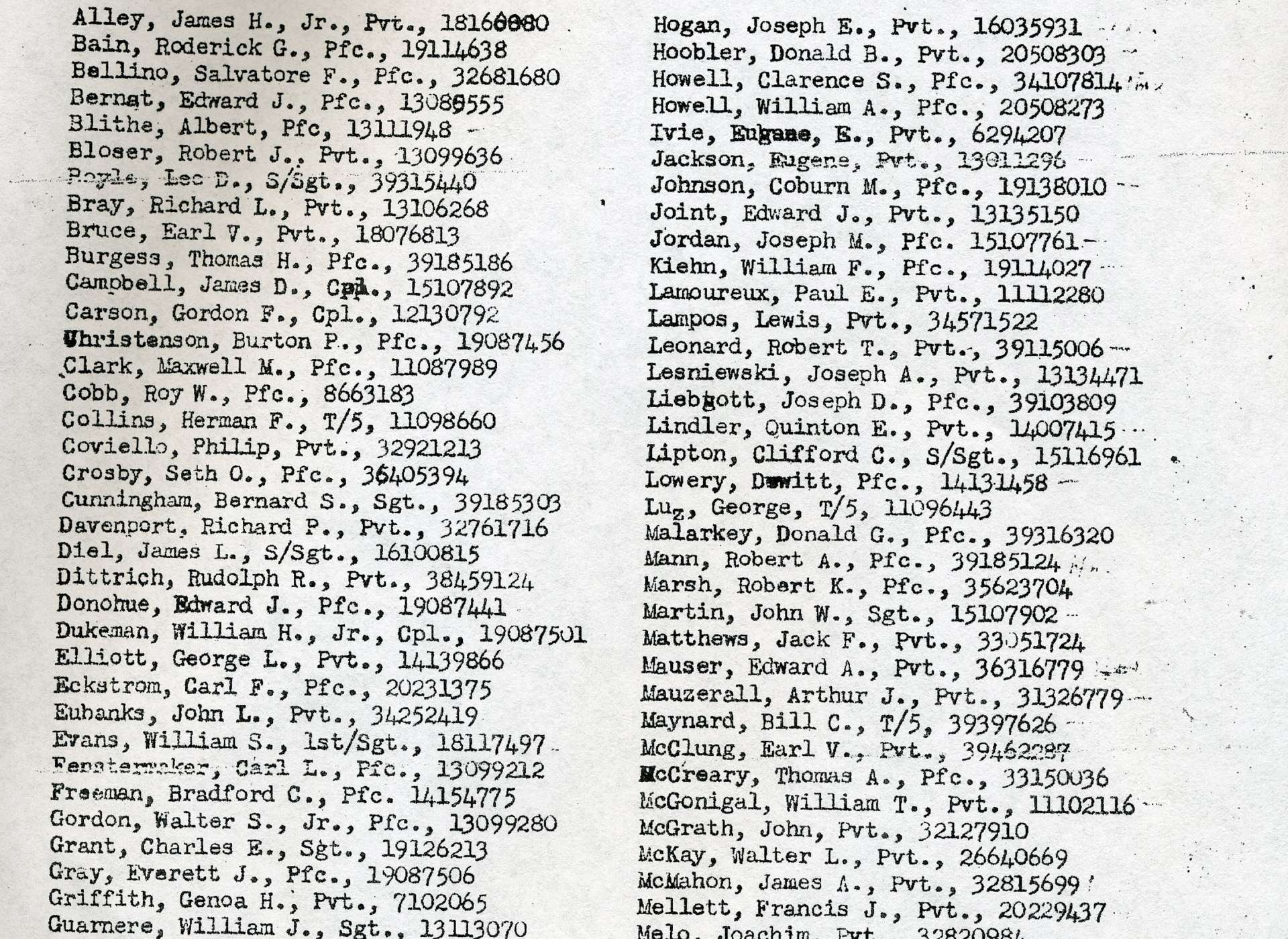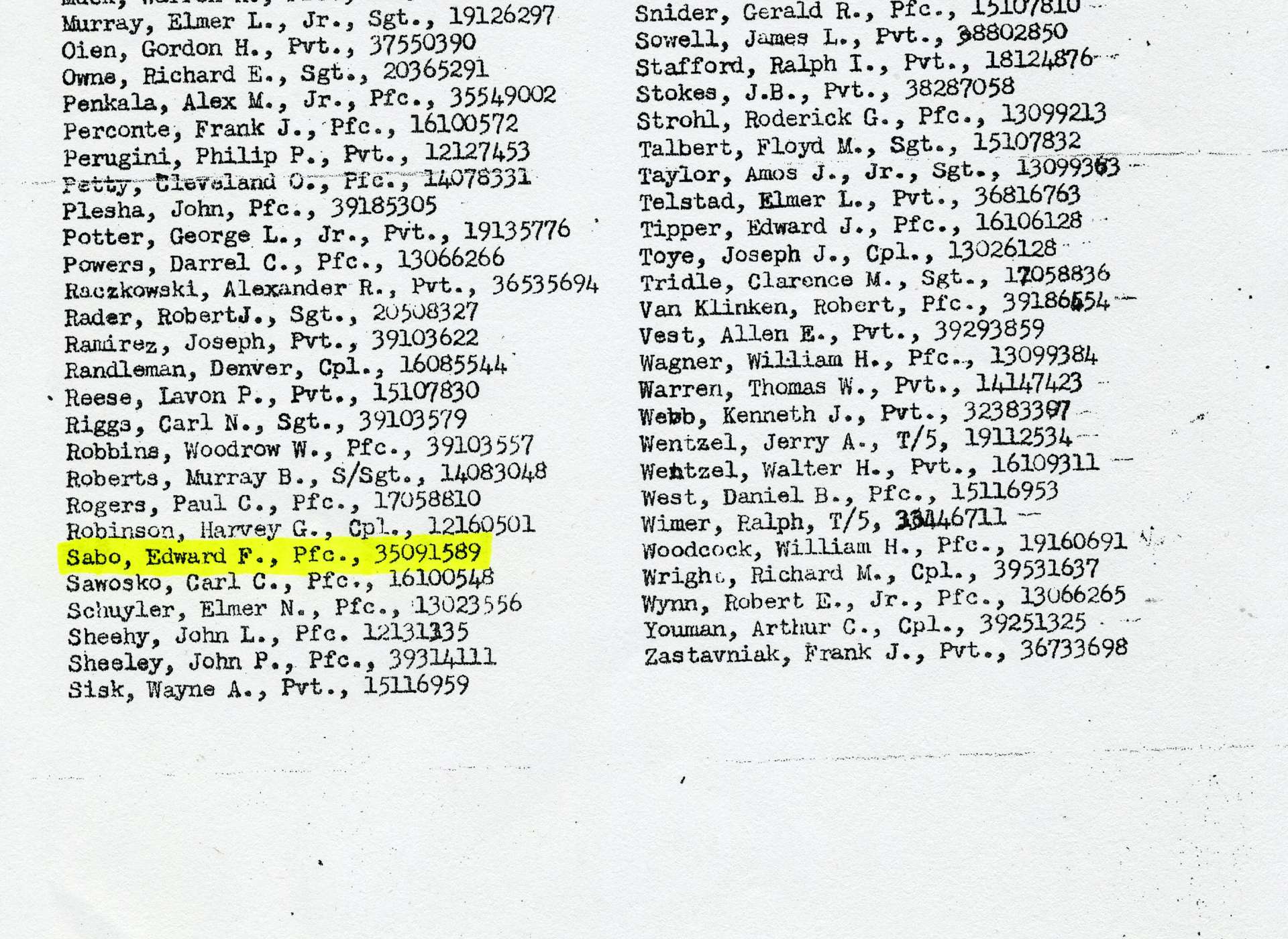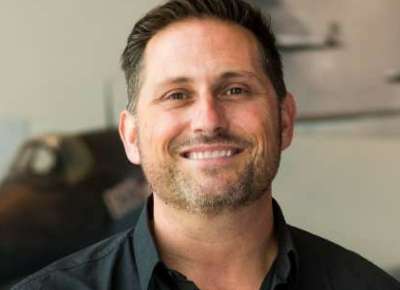Actual combat-worn items named to a specific, gravel-crunching infantryman are fairly rare items in our artifact collection, or anywhere for that manner. The scarcity is a direct result of the experience and role of the infantry in warfare. The infantry closes with and engages the enemy at point-blank range—they take ground and hold it.
In the US Army during World War II, where more than 8 million served, infantrymen were the trigger-pullers, the relatively small portion of soldiers who were quite literally the “tip of the spear.”
The primitive living conditions experienced by these soldiers on the front lines during World War II are difficult for the average American to imagine today. In addition to being killed and wounded at a disproportionately higher rate than other classes of soldiers, the infantryman’s day-to-day life on the line was miserable. Exposure to enemy fire, extreme weather, sleep deprivation, and burrowing into the ground like an animal every night for sheer survival extracted a heavy toll on men and equipment.
When a unit came off the line, the infantry soldier’s combat-worn uniform was often so filthy and lousy that it was discarded and he was issued a fresh new one. The soldier’s issued uniform became his to keep; his combat equipment however, had to be returned to supply. Soldiers were held personally accountable for the return of load bearing equipment, pistol belts, canteens, entrenching tools, haversacks, helmets, and the like as the army reissued this gear. However, items deemed unserviceable or not worth repairing were inevitably written off or claimed to have been combat losses.
Private First Class Ed Sabo’s “lost” helmet was given to the National WWII Museum by his daughter in 2003. Sabo served under Sgt. “Wild” Bill Guarnere in the 2nd Platoon of Easy Company, 506th Parachute Infantry Regiment (PIR), the same unit chronicled in Stephen Ambrose’s bestselling novel Band of Brothers. Easy Company’s drive across Europe is heavily documented in several books; Sabo was one of the original members of the company going all the way back to Camp Toccoa, Georgia, in 1942.
An interesting thing about Sabo’s helmet is that it is not quite 100% a parachutist’s helmet. The GI helmet is a two-component system: the “steel pot,” or outer shell, and the adjustable suspension liner that nests inside of the steel pot. Sabo’s steel pot is just a standard M-1 helmet shell, not the M-2 parachutist shell. The parachutist shell differs slightly by an additional set of snaps on the chinstrap that secure the parachutist-style liner to the shell. This added security measure is designed to keep the two parts of the helmet together during the violent opening shock of a parachute jump. The Sabo liner, however, is of the parachutist type.
-

Private First Class Edward Sabo’s helmet with the tactical symbol of the 506th Parachute Infantry Regiment, the “spade” clearly visible on the side.
Gift in Memory of Edward Sabo, 2003.352.001.
-

In this photo, the ghost of the 327th Glider Infantry Regiment’s tactical symbol of the “club” is faintly visible underneath the 506th marking.
Gift in Memory of Edward Sabo, 2003.352.001.
-

The two components of the GI helmet are seen in this image, the parachutist-style liner is distinguishable by the A-shaped yoke straps extending down below the helmet liner.
Gift in Memory of Edward Sabo, 2003.352.001.
-

Sabo’s helmet liner.
Gift in Memory of Edward Sabo, 2003.352.001.
-

The back of the Sabo helmet liner.
Gift in Memory of Edward Sabo, 2003.352.001.
-

The discoloration of the crown of the helmet from Sabo cooking in it is visible in this photo.
Gift in Memory of Edward Sabo, 2003.352.001.
-

-

The markings on the helmet are also very interesting. Two weeks before D-Day, the 101st Airborne Division held a staff conference to discuss methods to facilitate the quickest possible assembly of units once on the drop zones of Normandy. One idea that was put into practice immediately was to assign each of the four infantry regiments of the division a specific suit from the four suits in a standard deck of cards. The corresponding symbols were painted on both sides of every soldier’s helmet right before D-Day.
Sabo’s helmet carries the “spade” tactical symbol that was assigned to the 506th PIR. Upon closer inspection, faintly visible underneath the 506th “spade,” is another tactical symbol, the 327th Glider Infantry Regiment’s suit of “clubs.” To an observer, this symbol can conjure many different scenarios that could explain why or how this came to be. However, none of these scenarios can be proven, and unfortunately, Ed Sabo can’t reveal its story since he passed away in 1998.
The scenario that seems most plausible, and best explains the mish-mash of components that make up the helmet, is that the helmet shell was originally issued to a soldier of the 327th Glider Infantry Regiment. Glider-borne troops were issued the standard M-1 helmet, not the specialized M-2 parachutist version issued to the parachute infantry regiments of the 101st Airborne. At some point, Sabo must have lost his original helmet. The new helmet Sabo was issued was likely assembled from helmet components recovered from the battlefield that were refurbished and thrown back into circulation. But again, this assumption is purely theoretical.
Ed Sabo’s daughter did, however, describe stories her father recounted of cooking, shaving, and washing socks in his “steel pot,” a common practice among GIs, facilitated by removing the helmet liner. Evidence of this is clearly visible on the crown of the helmet shell where the paint has darkened considerably, undoubtedly by the open flames of countless campfires Sabo cooked over.
Those poor devils. You have to love the infantry.
Larry Decuers
Larry Decuers is a former Curator at The National WWII Museum and veteran of the US Army's 101st Airborne Division.
Cite this article:
MLA Citation:
APA Citation:
Chicago Style Citation:



![Max Fuchs, New York City cantor, sings as Rabbi Sydney [sic] Lefkowitz, Richmond, VA, conducts the first Jewish services from Germany.](/sites/default/files/styles/max_650x650/public/2025-10/image1.jpg)






